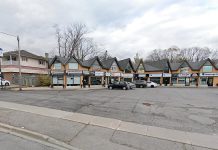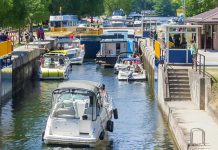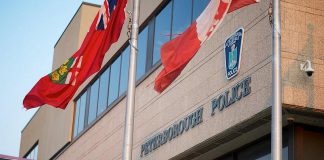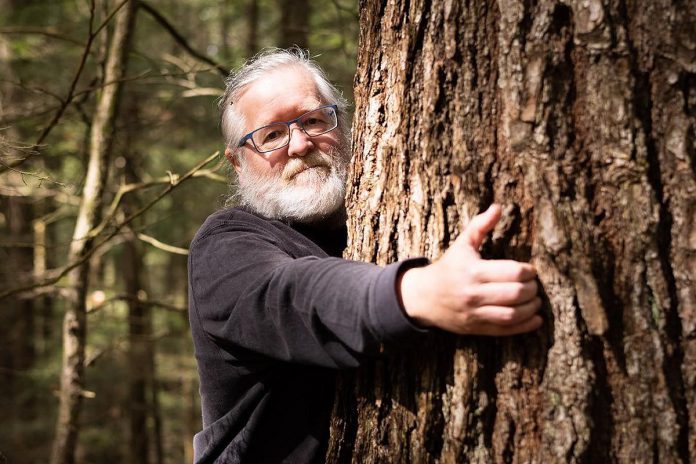
A crowdfunding campaign is underway for a documentary film to raise awareness about the largest known stand of old-growth eastern hemlock in Canada — located in a area of the Kawarthas known as the Catchacoma Forest.
A project by Toronto-born documentary filmmaker Mitch Bowmile, “Conserving Catchacoma” will document the efforts of the Catchacoma Forest Stewardship Committee, the BC-based non-profit Wilderness Committee, and the Peterborough-based non-profit Ancient Forest Exploration & Research (AFER) to prevent additional logging of old-growth eastern hemlock trees in the forest.
“Many people are unaware that Ontario’s forests hold large quantities of old-growth trees,” Bowmile writes on his Indiegogo page. “There’s a need for more field work to determine and identify areas of old-growth in Ontario so that it can gain protective status.”
The Catchacoma Forest is a 662-hectare stand of mature eastern hemlock north of Catchacoma Lake in Peterborough County, beside Kawartha Highlands Provincial Park.
In 2019, Dr. Peter Quinby, AFER’s chief scientist, identified the Catchacoma Forest as the largest-known stand of old-growth eastern hemlock in Canada, after AFER found many trees over 120 years old — with the oldest tree, a 350-year-old eastern hemlock, marked for logging.
Quinby began working with Katie Krelove — the first-ever Ontario campaigner for the Wilderness Committee, a registered non-profit society and federal charity founded in 1980 that works to preserve wilderness and protect wildlife across Canada — along with a group of concerned citizens, to bring the presence of old-growth trees in Catchacoma Forest to the attention of the Ontario government.
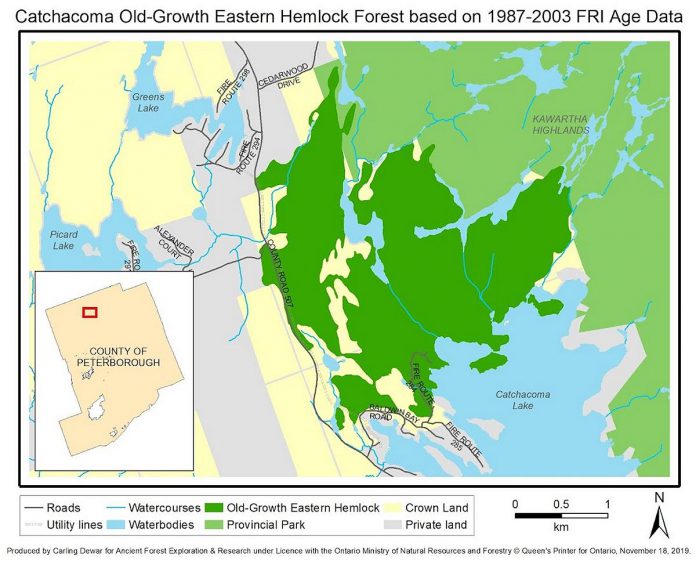
The Conserving Catchacoma group has been calling for a moratorium on logging in the forest, which they say is also home to at least 10 documented species at risk. Portions of the forest were logged in the winter of 2019-20 and 2020-21 including, according to the group, many eastern hemlock trees that were more than 140 years old. Eastern hemlocks, which can live up to 600 years, are often overlooked as old-growth trees because they grow slowly and their trunks may not be that large — while trunk size is an indicator, determining actual age involves taking a core sample to count the rings.
The Catchacoma Forest is located in what’s known as the Bancroft Minden Forest Management Unit (a designation by the Ministry of Northern Development, Mines, Natural Resources and Forestry), an area comprising 400,000 hectares. The Bancroft Minden Forest Company holds the sustainable forest license to manage the Crown land within the area, and is responsible for developing a 10-year forest management plan that is ultimately approved by the ministry.
Along with its efforts for a moratorium on logging in the Catchacoma Forest, the Conserving Catchacoma group is also lobbying provincial government to have the forest’s land use designation amended from “general use” to “conservation reserve” — pointing out that doing so will help the Ontario government meet its pledge to protect 25 per cent of land by 2025 and 30 per cent by 2030. The group says only 10.7 per cent of land is currently protected in Ontario.
For its part, the Bancroft Minden Forest Company states the Catchacoma Forest is not an untouched old-growth forest, having been previously logged in 1988, and consists of species other than eastern hemlock — although the company acknowledges old-growth trees in the forest have been logged.
“While there is a presence of old trees, forests are not managed based on individual tree ages,” says the company’s general manager Svetlana Zeran in a 2020 opinion piece, adding that registered professional foresters recommend the harvesting of less vigorous trees while retaining healthy trees “that will benefit from a release from competition.”
“The goal of this particular harvest is to favour retention of hemlock with healthy large crowns (stems and leaves) to create the sunlight conditions needed to build them up,” Zeran explains. “This would help them grow more resilient to the likely threat of future attacks from the invasive insect: hemlock woolly adelgid (Adelges tsugae) which slowly depletes hemlock nutrient stores by feeding on their needles. To ensure this prescription was carried out, a certified tree marker assessed every tree and marked with paint those for removal and those with high wildlife value for retention.”
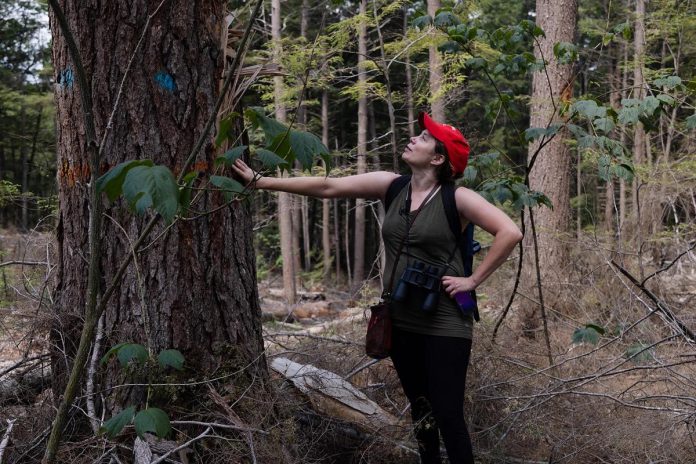
The Conserving Catchacoma group points out it’s not against logging, recognizing the economic and ecological benefits of sustainable harvesting of trees and the expertise of forest management companies.
“The logging industry provides valuable services to our managed forests in Ontario and Canada,” Bowmile writes on Indiegogo. “Sustainable logging practices greatly benefit the health of a forest ecosystem. The work of loggers and foresters is vital to both ecological and industry values.”
However, the group is against the logging of old-growth trees since it’s not a sustainable practice.
“Old growth trees have significant benefits to a forest ecosystem,” Bowmile writes. “The most significant to humans is that they’ve stored a significant amount of carbon (CO2) since they were saplings. When old-growth trees rot, are cut, or are burned, carbon is released into our atmosphere contributing to the human-caused climate crisis.”
“With further studies needed to determine just how much old-growth is left in the province of Ontario, remaining stands of old-growth forests need to be protected. Once they’re gone, they’re gone forever.”
With persistent efforts, the Conserving Catchacoma group has succeeded in having its concerns reflected in the 2021-2031 Draft Bancroft Minden Forest Management Plan.
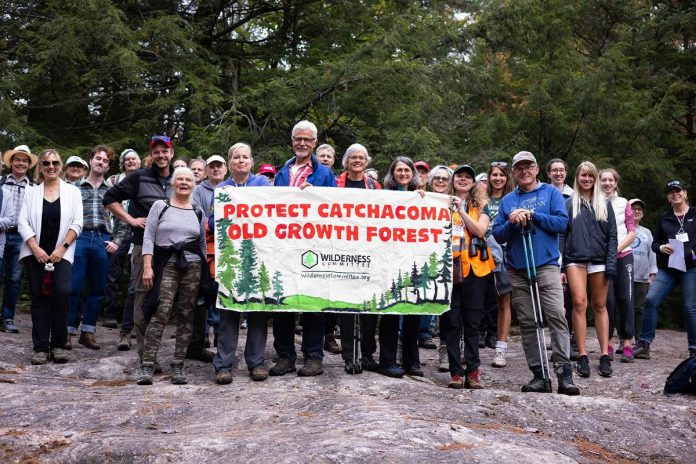
As well as recognizing two hemlock-dominated stands near Catchacoma Lake as “unavailable for forest management”, the plan changes the harvesting designation of one area of the forest from “regular” to “contingency” — meaning harvesting is less likely to happen.
Regular harvesting in two areas of the forest will also be delayed for one year to allow ministry staff to complete additional surveys for species at risk as well as to provide technical guidance for verifying and delineating old-growth trees.
Despite these successes, the Conserving Catchacoma group notes one-fifth of the forest remains eligible for regular harvesting and, after the one-year delay in the two specified areas, regular harvesting could begin again. The Wilderness Committee and AFER are calling for a longer moratorium on logging so that further research can be conducted and the Catchacoma forest can be protected.

Bowmile is seeking to raise $5,000 to support the “Conserving Catchacoma” documentary, which is intended to share information about the Catchacoma Forest and its ecological value and to advocate for the identification and protection of old-growth trees in Ontario’s forests. Funding will go towards production and post-production costs associated with the film, with any leftover funds going towards film distribution and marketing.
For more information, visit www.conservingcatchacoma.com and follow Conserving Catchacoma on Instagram @conservingcatchacoma. To support the documentary, visit indiegogo.com/projects/conserving-catchacoma-fundraiser/.
The Catchacoma Forest is located on the Treaty 20 Michi Saagiig territory and in the traditional territory of the Michi Saagiig and Chippewa Nations, collectively known as the Williams Treaties First Nations, which include Curve Lake, Hiawatha, Alderville, Scugog Island, Rama, Beausoleil, and Georgina Island First Nations.



